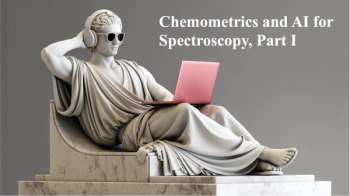Key Points
- New NIR-CNN system identifies hazardous chemicals from a distance without contact.
- Custom-built hyperspectral imager covers 900–1700 nm with high spatial accuracy.
- CNN model outperforms traditional methods like SVM and KNN in classification accuracy.
- Successfully detects trace explosives through glass, plastic, and even clothing barriers.
Advances in Remote Hazardous Material Detection
In a major advance for safety and security technology, a team of scientists from the Institute of Biomedical Photonics and Sensing at Xi’an Jiaotong University (Xi’an, China) has demonstrated a new non-contact method for identifying dangerous chemicals using near-infrared (NIR) hyperspectral imaging and artificial intelligence (AI). Published in Spectrochimica Acta Part A: Molecular and Biomolecular Spectroscopy, their research shows how a custom-built imaging system, paired with a convolutional neural network (CNN), can rapidly and accurately classify explosives and other hazardous substances—even in complex, real-world environments. The study was conducted by Chen Chen, Jing Xin, ZiYao Peng, Chen Xi Wang, Hong Yi Lan, Cui Ping Yao, and Jing Wang (1).
The Challenge: Rapid, Reliable Detection from a Distance
In the aftermath of devastating events such as the 2015 Tianjin Port explosion and the 2020 Beirut Port blast, the importance of quickly identifying hazardous chemicals has become clear. Traditional techniques like chromatography, Raman spectroscopy, and X-ray imaging, while powerful, often face limitations such as destructiveness, high false-positive rates, or low sensitivity (1).
Enter hyperspectral imaging (HSI), a method that combines spatial and spectral information for each pixel in an image. When implemented in the near-infrared (900–1700 nm) range, HSI offers deep material penetration and non-destructive analysis. However, differentiating substances with similar spectral features has remained a key obstacle, until now (1–3).
A Smarter Way: NIR Spectroscopy Meets CNN
To address the limitations of conventional hazardous materials detection methods, the researchers involved with the study developed a custom NIR hyperspectral imaging system designed for stand-off, non-contact analysis (1). The system utilizes a transmissive grating for spectral dispersion and a lateral scanning mechanism to capture detailed hyperspectral data across large areas. This approach allows for the detection of trace substances on a variety of surfaces—even through glass, plastic, or clothing—making it highly suitable for field deployment in complex environments (1).
Targeting Dangerous Compounds
The team focused on six hazardous chemicals commonly used in industrial and military contexts: potassium chlorate (KClO₃), ammonium nitrate (AN), trinitrotoluene (TNT), cyclotrimethylenetrinitramine (RDX), pentaerythritol tetranitrate (PETN), and PYX (2,6-bis(picrylamino)-3,5-dinitropyridine). Each of these explosives exhibits distinct spectral signatures in the NIR range, enabling machine learning algorithms to differentiate between them (1–3). For instance, ammonium nitrate shows a strong absorption band at 1585 nm, while TNT is characterized by several smaller but still identifiable absorptions. These subtle differences, often indistinguishable by the naked eye or traditional analytical tools, are leveraged by a convolutional neural network (CNN) to enhance classification accuracy (1).
CNN Performance: Outshining Traditional Methods
When trained on the hyperspectral data, the CNN model demonstrated outstanding performance metrics: 91.08% accuracy, 91.15% recall, 91.62% specificity, 90.17% precision, and an F1 score of 0.924. These results significantly outperformed traditional classification techniques such as support vector machines (SVM) and K-nearest neighbors (KNN), highlighting the advantage of deep learning in spectroscopic data interpretation (1).
Real-World Scenarios: Rigorously Tested
The system was further validated in rigorous, real-world-inspired scenarios. It successfully detected trace levels of explosives as low as 10 mg/cm² for both ammonium nitrate and TNT. Additionally, it was able to simultaneously identify more than 100 targets within a single scan, demonstrating its high-throughput potential. Remarkably, the system maintained accurate identification of hazardous substances even when samples were placed inside thin plastic or glass containers, scattered across open ground, or obscured by layers of clothing. This robustness to environmental interference marks a major advance in the field of remote chemical sensing (1).
Applications and Future Outlook
These capabilities suggest a powerful new direction for hazardous material detection, particularly in emergency response, security screening, and environmental monitoring applications. By integrating hyperspectral NIR imaging with artificial intelligence, the research team has created a scalable solution that combines non-contact safety with high detection sensitivity. Continued development and field deployment of such systems could significantly enhance public safety and threat detection in high-risk environments (1–3).
These capabilities enable rapid decision-making in the field, crucial for rescue operations, security screening, and forensic investigations.
References
(1) Chen, C.; Xin, J.; Peng, Z.; Wang, C.; Lan, H.; Yao, C.; Wang, J. Stand-Off Hazardous Materials Identification Based on Near-Infrared Hyperspectral Imaging Combined with Convolutional Neural Network. Spectrochim. Acta A Mol. Biomol. Spectrosc. 2025, 327, 125311. DOI: 10.1016/j.saa.2024.125311
(2) van Damme, I. M.; Mestres-Fitó, P.; Ramaker, H. J.; Hulsbergen, A. W.; van der Heijden, A. E.; Kranenburg, R. F.; van Asten, A. C. Rapid and On-Scene Chemical Identification of Intact Explosives with Portable Near-Infrared Spectroscopy and Multivariate Data Analysis. Sensors 2023, 23 (8), 3804. DOI: 10.3390/s23083804
(3) Zapata, F.; Ferreiro-González, M.; García-Ruiz, C. Interpreting the Near Infrared Region of Explosives. Spectrochim. Acta A Mol. Biomol. Spectrosc. 2018, 204, 81–87. DOI: 10.1016/j.saa.2018.06.002






